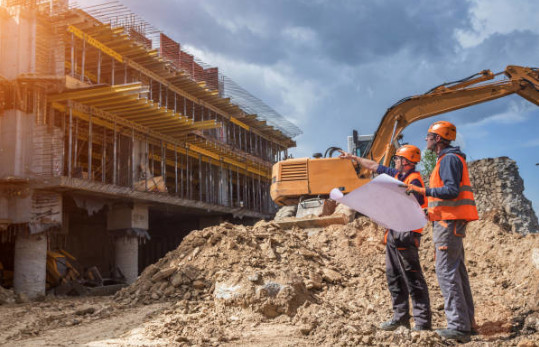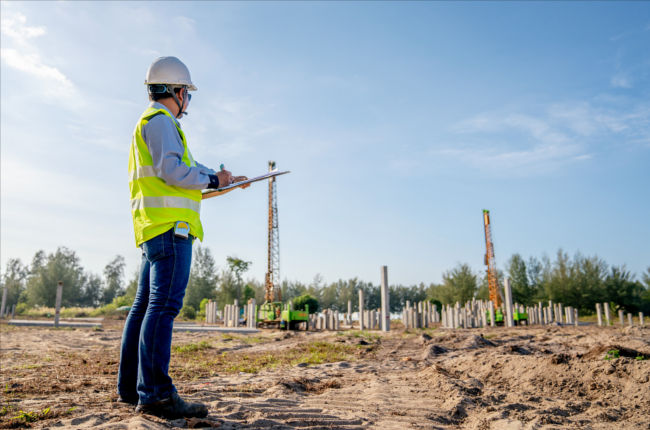Geotechnical Geologist Services for Accurate Dirt and Rock Analysis
Geotechnical Geologist Services for Accurate Dirt and Rock Analysis
Blog Article
How Consulting Engineers Enhance Geotechnical Design Projects: Insights Into Their Proficiency, Approaches, and Collaborative Approaches
Consulting engineers are critical in improving geotechnical engineering projects, applying their specialized understanding to navigate the complexities of subsurface conditions. Their joint methods foster communication amongst varied project stakeholders, eventually forming the task's trajectory.
Role of Consulting Engineers
The expertise of getting in touch with engineers in geotechnical engineering is basic to the effective execution of building and construction tasks. These professionals play an essential duty in assessing soil and rock residential or commercial properties, which are important variables affecting design and construction decisions. By conducting thorough site investigations, getting in touch with designers collect important information that informs the style procedure, guaranteeing tasks are improved steady and ideal ground.
Consulting designers also give important insights into risk administration (geotechnical geologist). They identify potential geotechnical dangers, such as landslides, dirt liquefaction, and settlement concerns, allowing stakeholders to carry out reliable reduction methods. Their know-how help in maximizing foundation layouts, which can result in considerable expense financial savings and improved safety and security
Moreover, getting in touch with engineers serve as a vital link between job proprietors, designers, and specialists. Their capacity to translate complicated geotechnical data right into actionable referrals fosters cooperation and assists in educated decision-making throughout the job lifecycle. This multidisciplinary approach not only boosts job efficiency yet also ensures conformity with regulatory criteria and best techniques.
Key Techniques in Geotechnical Engineering

One main technique is website investigation, which involves carrying out field tests and lab evaluations to gather data on subsurface conditions. Methods such as Criterion Penetration Testing (SPT) and Cone Penetration Screening (CPT) are widely utilized to evaluate soil stratigraphy and toughness. Additionally, geophysical approaches, including seismic and electric resistivity studies, supply non-invasive means to evaluate subsurface characteristics.
An additional critical method is mathematical modeling, which enables engineers to simulate different circumstances and anticipate just how soil-structure interactions will certainly act under different loading problems. Finite Aspect Analysis (FEA) is an usual strategy used in this context.
In addition, the design of foundations, keeping structures, and earthworks relies heavily on these methodologies - geotechnical geologist. By integrating advanced analytical tools with area information, seeking advice from designers can develop tailored solutions that address particular task challenges, eventually adding to the security and safety of construction projects
Significance of Dirt Analysis
Dirt analysis acts as a foundational component in geotechnical design, providing important insights right into the physical and chemical residential or commercial properties of soil necessary for efficient building planning. Comprehending dirt attributes is vital for identifying its load-bearing capacity, water drainage behavior, and capacity for settlement or instability. Detailed soil investigations, including tasting and lab testing, help identify criteria such visit here as soil kind, moisture content, density, and shear toughness.
These analyses educate the option of suitable building methods and products, eventually influencing task security and longevity. For circumstances, cohesive dirts might call for different structure styles contrasted to granular soils, requiring customized design options. Furthermore, soil analysis help in recognizing pollutants that could present dangers to human wellness or the setting, permitting the advancement of mitigation approaches.
Including dirt evaluation into the onset of job advancement helps to lessen unpredicted obstacles, ensuring that engineers can prepare for and resolve potential issues prior to they escalate. By establishing an extensive understanding of the site problems, speaking with designers can enhance design performance and decrease expenses, thereby improving the overall success of geotechnical engineering projects.
Joint Strategies in Projects
Successful geotechnical jobs commonly rest on joint techniques that combine varied competence from various techniques. Effective partnership amongst seeking advice from engineers, geologists, environmental scientists, and construction professionals is critical for dealing with complicated obstacles and optimizing task results. By leveraging the one-of-a-kind skills and understanding of each group participant, tasks can take advantage of a holistic understanding of the site problems, regulative needs, and design restraints.
Regular interaction and interdisciplinary meetings facilitate the sharing of understandings and cultivate a society of team effort. These joint efforts allow the identification of prospective risks early in the project lifecycle, permitting timely mitigation strategies. Including comments from stakeholders, including local communities and regulatory companies, guarantees that all viewpoints are taken into consideration, boosting job approval and conformity.
Furthermore, the integration blog of sophisticated innovations, such as Geographic Details Equipment (GIS) and Structure Info Modeling (BIM), additional boosts partnership. These devices enable the real-time sharing of data and visualization of geotechnical conditions, advertising informed decision-making. Eventually, a joint approach not only simplifies job execution however likewise lays the foundation for ingenious remedies to complicated click to find out more geotechnical design challenges.
Influence On Job End Results

Consulting designers employ advanced approaches such as threat analysis and anticipating modeling, which boost the accuracy of job forecasts. Their capacity to integrate ingenious technologies, like geotechnical instrumentation and information analytics, better refines the style and building procedures. Because of this, jobs experience enhanced effectiveness, reduced costs, and reduced delays.
Moreover, cultivating reliable communication and collaboration amongst employee boosts analytic capacities. When challenges arise, an unified front enables speedy identification of solutions, protecting against prospective problems. Eventually, the joint initiatives of seeking advice from engineers contribute to greater quality end results, guaranteeing that jobs meet both governing criteria and client expectations.
Verdict

Report this page